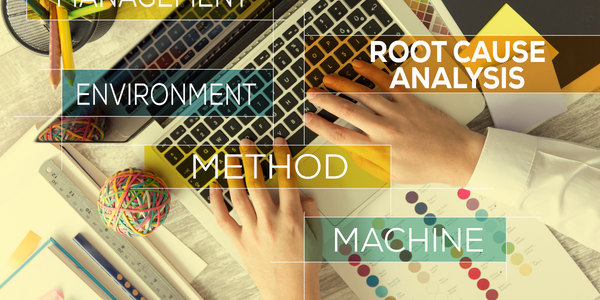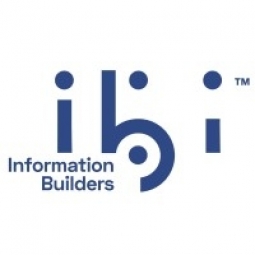Customer Company Size
Large Corporate
Region
- America
Country
- United States
Product
- WebFOCUS
- WebFOCUS Portal
- Developer Studio
- In-Document Analytics
- Active Technology Reports
Tech Stack
- Business Intelligence
- Analytics
- Data Integration
- Data Integrity
Implementation Scale
- Enterprise-wide Deployment
Impact Metrics
- Productivity Improvements
- Digital Expertise
- Customer Satisfaction
Technology Category
- Analytics & Modeling - Real Time Analytics
- Analytics & Modeling - Predictive Analytics
- Application Infrastructure & Middleware - Data Exchange & Integration
Applicable Functions
- Sales & Marketing
- Business Operation
Use Cases
- Predictive Quality Analytics
- Predictive Replenishment
- Demand Planning & Forecasting
Services
- Software Design & Engineering Services
- System Integration
About The Customer
Trustmark is an Illinois-based provider of employee benefits with more than $880 million in annual revenues and 4,000 associates. The company’s largest subsidiary, Voluntary Benefit Solutions (VBS), contributes about one-third of its income. Trustmark was in the process of a five-year strategic transformation and revenue growth initiative for its VBS subsidiary. The company was facing challenges with its existing reporting system, which took weeks to complete and delivered limited insight. This led to business users often relying on Excel spreadsheets, which contained incomplete or outdated information.
The Challenge
Trustmark, a leading provider of employee benefits services, was facing a challenge with its Voluntary Benefit Solutions (VBS) subsidiary. The company lacked formalized metrics and indicators needed to support a five-year strategic transformation and revenue growth initiative. Existing reports took weeks to complete and delivered limited insight. As a result, business users often relied on Excel spreadsheets, which contained incomplete or outdated information. The company needed a centralized business intelligence (BI) and analytics capability to consolidate data from multiple diverse systems and make it readily accessible to executives, process owners, and operational workers so they can closely monitor VBS operations and activities.
The Solution
Trustmark implemented Information Builders' WebFOCUS, a business intelligence (BI) and analytics technology, to build successful dashboards and InfoApps. The dashboards and InfoApps were rolled out to the VBS sales and financial teams – more than 1,000 users. The environment was implemented using the WebFOCUS Portal, allowing users to personalize their experience by dragging and dropping the content they want to see onto their dashboards. WebFOCUS seamlessly integrates with Active Directory, ensuring that different groups of users only have access to the sets of data they are allowed to view. This has helped Trustmark better detect, correct, and even prevent issues. The company is now working to expand and enhance its WebFOCUS environment, with a team of data analysts, process owners, data designers and architects, and WebFOCUS presentation experts defining, creating, and deploying new KPIs for existing users, and keeping the dashboards and InfoApps performing efficiently.
Operational Impact
Quantitative Benefit

Case Study missing?
Start adding your own!
Register with your work email and create a new case study profile for your business.
Related Case Studies.

Case Study
IoT Data Analytics Case Study - Packaging Films Manufacturer
The company manufactures packaging films on made to order or configure to order basis. Every order has a different set of requirements from the product characteristics perspective and hence requires machine’s settings to be adjusted accordingly. If the film quality does not meet the required standards, the degraded quality impacts customer delivery causes customer dissatisfaction and results in lower margins. The biggest challenge was to identify the real root cause and devise a remedy for that.
Case Study
Pepsico's Transformation to Smarter Sales Forecasting with Designer Cloud
PepsiCo, a global consumer packaged goods company, faced a significant challenge in calibrating sales forecasting to supply the right product quantities to its retailers. The sales forecast incorporated a variety of data, including warehouse data, store stock data, and promotional forecast data, all of which were provided by retailers in different file formats and delivered using various methods. The primary challenge was the speed of preparing a sales forecast. With the existing Microsoft Access and Excel-based processes, the time required to prepare this data was so extensive that analysts could only leverage it once a month or not at all. This inefficiency risked under or oversupplying retailers, potentially impacting PepsiCo's business operations and customer relationships.

Case Study
Prevent Process Inefficiencies with Automated Root Cause Analysis
Manufacturers mostly rely on on-site expert knowledge for root cause analysis. When the defective product is sent to lab for analysis, it is laborious and always a post-mortem one. Manufacturers that collect data from IT and OT also need a comprehensive understanding of a variety of professionals to make sense of it. This is not only time consuming, but also inefficiencient.

Case Study
Digitization of Pharmaceutical Packaging Machines: A Case Study of CVC Technologies
CVC Technologies, a leading manufacturer of pharmaceutical packaging machines, was seeking an end-to-end IoT solution to fully digitize their pharmaceutical liquid filling and capping machines. The company aimed to enhance the safety of their equipment, introduce digital maintenance capabilities, and gain visibility into machine status from anywhere at any time. The challenge was to find a solution that could provide real-time visibility into the machine's status, deliver direct cloud connectivity and digital services, and simplify all aspects of the machine's lifecycle, from engineering to maintenance.

Case Study
Gexa Energy and AutoGrid's Innovative Demand Response Programs in ERCOT
Gexa Energy, a leading retail electricity provider in Texas, was seeking to introduce new demand response programs for its commercial and industrial customers in the Electric Reliability Council of Texas (ERCOT) market. The challenge was to provide a platform that would allow these customers to lower their energy bills by adjusting their energy consumption during peak energy demand or high wholesale electricity prices. The solution needed to be intelligent, scalable, and offer both manual and automated options for adjusting energy consumption. The demand response programs needed to include Emergency Response Service (ERS), Real-Time Price Response (RTPR), and 4 Coincident Peak (4CP).

Case Study
CleanTelligent Enhances Janitorial Software Solutions with Infor Birst
CleanTelligent Software, a company that aids in-house and contracted janitorial teams in streamlining communication and improving quality control, faced a significant challenge. Their clients were demanding a more dynamic way to present reporting data. The company's software was primarily used to analyze and summarize a custodial team's performance, replacing a highly manual, paper-driven process. However, the initial differences between service providers in the janitorial industry are often unclear, and the cost of switching is comparatively low. This situation led to high client turnover, with a janitorial company's customer lifetime averaging four years or less. CleanTelligent needed to improve the customer experience with dynamic dashboards and reporting, retain customers through predictive analysis, capitalize on advanced analytics capabilities to build market differentiation, and improve client retention rates.







